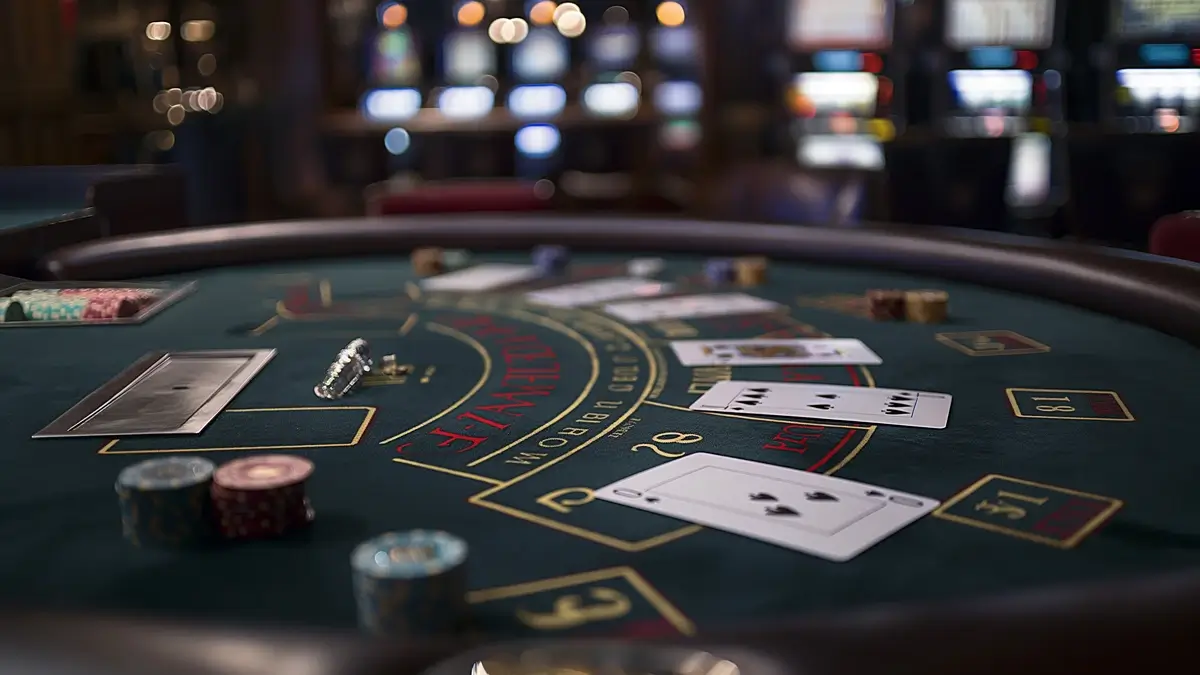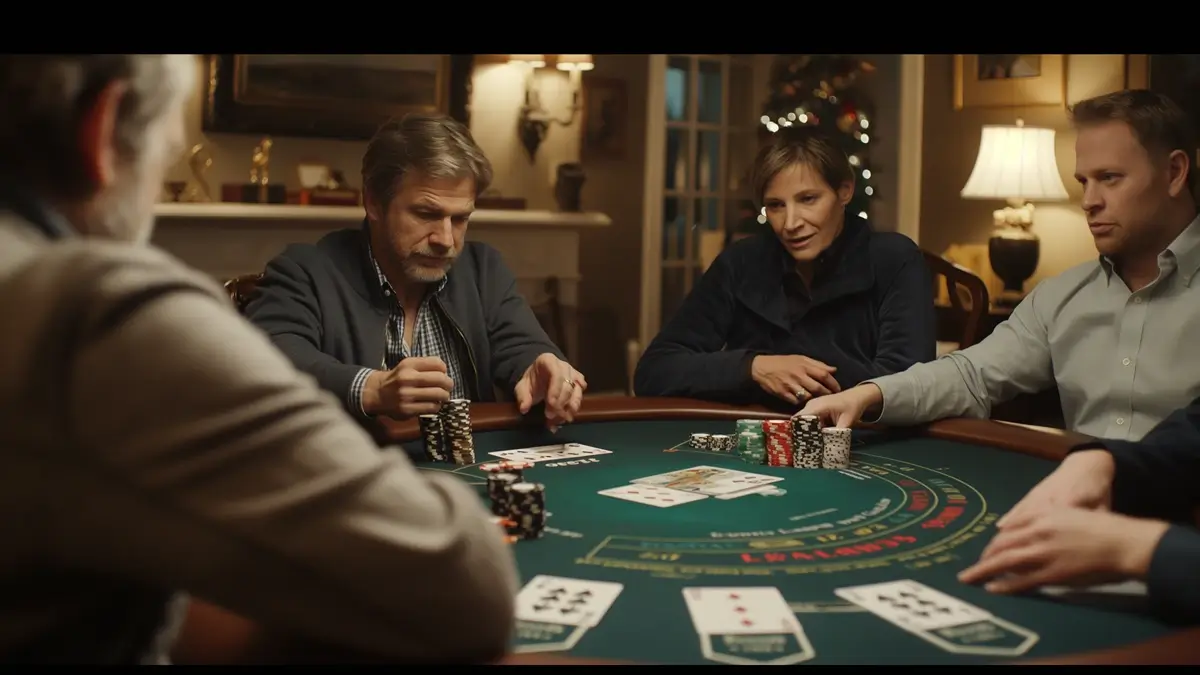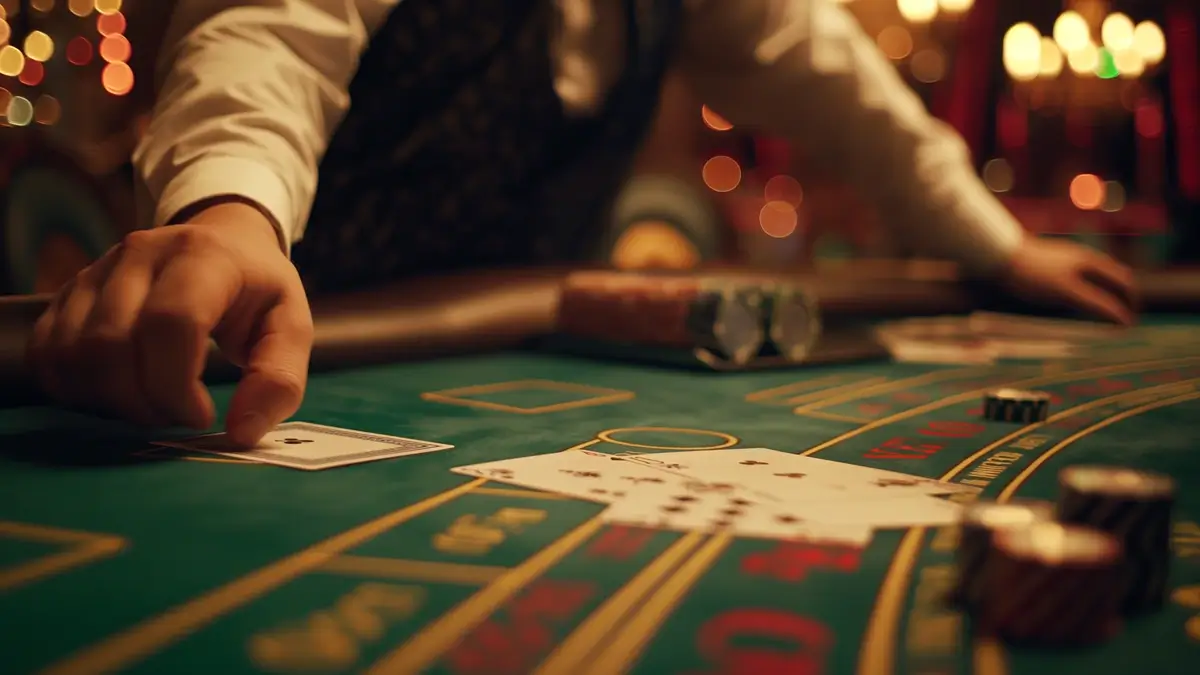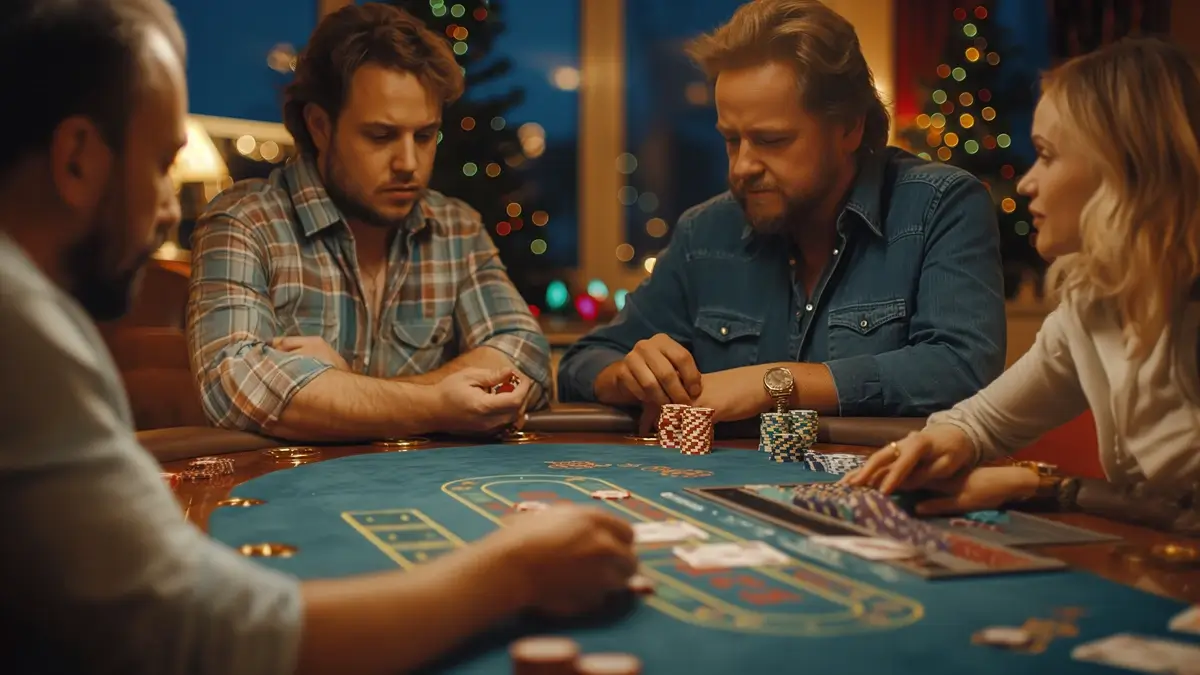How to Play Blackjack?

Blackjack dates back to 16th Century Europe and has become a favored game by gamblers around the world.
Knowing the blackjack rules and strategy associated with the game can go a long way in making for a positive experience, whether playing on the Las Vegas Strip or online.
So what exactly are the rules of blackjack? Keep reading to learn more about how to play this classic game.
How to Win Blackjack?

Ready to hit the blackjack table? Here’s a look at some key aspects of the game.
How to beat the dealer
The goal of each player is to draw a hand with a value higher than the dealer’s hand. The highest total allowed is 21 and a player hitting that number is in good shape. When a player is dealt an Ace and a face card on the initial two cards, this is known as a “blackjack” and the top hand a player can get. The only time this may not win is in the rare case when the dealer also has a blackjack.
Players who don’t reach 21 on the first two cards can draw to get as close to 21 without going over. If the player or dealer goes over 21, this is known as a “bust” or “busting.”. In these cases, the player loses his or her bet and the dealer is forced to pay out all players who haven’t busted.
How do you lose to the dealer?
The basic rules of blackjack are pretty simple, when your hand value exceeds 21 then you have busted and lost your bet. You also lose when the dealer’s hand value is greater than yours at the end of the betting and drawing round.
Blackjack casino rules give the house an edge and this includes the dealer acting last. One additional thing to remember is that unlike in poker, where players square off against each other, blackjack players are solely playing against the dealer.
All other players at the table may lose with their hands, but you can still win if your hand beats the dealer’s hand. The dealer will then pay out your winnings next to your initial bet.
How to Calculate the Value of a Hand?
The official rules of blackjack spell out the value of certain hands in the game. Remembering these is pretty easy. All numbered cards retain that value and all face cards (Jacks, Queens, and Kings) are worth 10. An Ace can either play as a 1 or 11 depending on which works best for a player’s hand. Here’s a quick guide to remember these number values.
| Card | Value |
| Aces | 1 or 11 |
| Kings | 10 |
| Queens | 10 |
| Jacks | 10 |
| Rens | 10 |
| Nines | 9 |
| EIghts | 8 |
| Sevens | 7 |
| Sixes | 6 |
| Fives | 5 |
| Fours | 4 |
| Threes | 3 |
| Twos | 2 |
Blackjack Table Layout
Players wishing to jump in the action might want to know a bit about the blackjack table. The dealer is positioned behind the table and there are usually six or seven seats for players on the opposite side of the dealer
Each seat features a circle or square on the table felt where players place their bets for each hand. There are also usually some rules on payouts, insurance, and any other blackjack casino rules (more on those below).
Start Playing Blackjack
There are some key aspects to keep in mind when playing blackjack. Here’s a quick look at some of the game mechanics.
Place a wager
Players begin each hand by first placing a bet in front of them in the wagering circle or square located on the table felt. Players must at least be the table minimum, which can range from $5 to $25 and even much higher in high-stakes games.
Some Las Vegas casinos even offer $1 games, although with unfavorable blackjack casino rules. To bet, players simply move or slide chips out to the betting area and leave it there until the hand is over; it’s a pretty simple process.
Dealer deals cards
Once the bets are placed, the dealer distributes all cards – one to each player and then himself, and then following the same pattern for a second card for each player. Most games now feature all cards dealt face up. Players and the dealer can then quickly add up the values of the hands.
However, only one of the dealer’s cards is dealt face up. A player must then gauge if they think their hand can beat the dealer’s and whether he or she wants to receive additional cards.
Player decides how to play on their turn
Once each player receives a card, the action begins with the player to the dealer’s left and continues from there around the table. Each player makes one of these decisions:
- Hit – Players who feel they need another card to get closer to 21 can say “hit” or “hit me.” That player is then dealt another card, hoping to get as close to 21 as possible. A player can also swipe a finger or hand toward them to receive another card. A player can stop at any time or the hand is over if busting (going over 21).
- Stand – A player who already has a solid card may not want to receive any more cards. Players can wave a flat hand left and right to indicate that they don’t want any more cards and the action then goes to the next player.
- Split – A player dealt two of the same cards, such as 8d8c, has the opportunity to split those cards into two different hands by making a second bet of the same value as the initial bet. These hands then play out in the normal routine with each 8 receiving a second card and the player has the opportunity to hit, stand, or double (more on that below). Some casinos even allow for another split if a player is dealt yet another 8 to match the other two.
- Double down – The rules to blackjack allow players to double their bets on certain hands. This allows players to win even more with a favorable hand, but they also only receive one card. Doubling is common on hands totaling 9, 10, or 11 (and some casinos only allow it on these hand values) because of the likelihood of being dealt another high card such as a 9, 10, or ace. In certain situations this is an advisable play and not so in other situations.
- Surrender – Some casinos allow this action, in which a player simply surrenders his hand without taking any other cards. You know that when you surrender a hand you will lose 50% (or half) of your wager.
As the game plays out, it’s important to quickly count your cards, remembering that all number cards are valued at that same number and face cards are all worth 10. Aces count as 1 or 11. At a casino, the dealer will also usually count your cards as well. Online casinos will also indicate the total of your hand on screen as well.
After all cards are dealt, the dealer checks if he has an ace “in the hole” (meaning the face down card). If the dealer doesn’t have an ace he will immediately pay out any players with a backjack. Remember, a blackjack is when a player is dealt an ace and 10-value card (10, jacks, queens, or 10s). In the unlikely event, the dealer and a player both have a blackjack, this is known as a “push” and the player doesn’t lose the bet, but doesn’t win any either.
After resolving all blackjack hands, other players can then make decisions on their own hands as outlined above: hit, stand, split, double down, or surrender.
Dealer plays hand
Blackjack dealer rules vary a bit compared to the players. The game favors the house (although the odds in blackjack can be much better than other casino games) and the dealer must follow certain procedures in regards to hitting and standing.
First, dealers are dealt and act last. The dealer also only reveals the last card, so players must deduce what might be underneath. This card is only revealed after all the other players at the table have acted (Remember: 10-value cards and aces making up more than 38% of a standard deck of cards). Other general rules for dealers include:
- The dealer must stand on 17 or higher.
- The dealer must draw on 16 or less.
- A dealer’s ace is counted as 11 if this would make his hand total 17 or more without busting. The dealer will then stand.
- The dealer can check if the facedown card is an ace for a possible blackjack.
Payouts
Everyone wants to win when gambling, so knowing the payout rules of blackjack are important. Once the dealer has completed all the action, winning hands (including split hands and any double down) will be paid out at even money. A player with a total over the dealer’s hand has a winning hand.
Any losing bets, those with totals below that of the dealer, will also be collected by the dealer. If the dealer busts, goes over 21, then all players who haven’t busted will be paid out.
It’s also important to remember that any blackjack is paid out immediately by the dealer before any other players can act. Blackjack traditionally paid players out at odds of 3 to 2, meaning if you bet $20 you’d receive $30 if you hit a blackjack. However, more casinos have moved to the inferior payout of 6 to 5, making these games less favorable to players.
In the event that the dealer and a player have the same hand, the rules of blackjack dictate that this is a “push,” meaning the hand is a tie. You won’t lose your bet in this case but won’t win anything either.
Basic Blackjack Strategy

While there is a set of advice based on the real mechanics of the game, players may also want to remember a few standard blackjack strategy tips when hitting the tables. Here are a few of those.
- Learn Basic Strategy – This is the best strategy to reduce the house edge. There are many blackjack rules cards available online that offer complete guides to basic strategy.
- Look for Fewer Decks – Fewer decks helps the player in the long run from an odds perspective. Most games feature six to eight decks, but higher stakes games with two decks or even a single deck are more favorable
- Look for Better Games– This can include 3-to-2 payouts for blackjack instead of 6-to-5 and other rules that are more favorable to players, such as doubling on more numbers.
- Don’t Split 10s – It’s never a good idea to break up an already great hand. Splitting 10s can turn a likely winner into two losers.
- Hit Soft 17 – Always take a hit on soft 17 (A-6). An additional card won’t bust you and staying only wins if the dealer busts.
- Play Smart When Doubling Down – Many players want to double down on any 9, 10, or 11. Other times it’s advised to double on even less than these counts. But some of these moves depend on what the dealer has. Learning basic strategy will help iron out these situations.
Special Blackjack Situations
There are some other special situations to watch out for when taking a seat at the blackjack table or when playing online. Here’s a look at some of these special rules for playing blackjack.
Insurance or Even Money Rule
When the dealer upcard is an ace, he or she will offer players the opportunity to take “insurance.” This means players can bet half of the bet they’ve already placed to “insure” some of his bet against the dealer’s potential blackjack.
The dealer will then check the bottom card. If the dealer has a blackjack, the blackjack insurance bet wins despite the initial bet being a loser (unless the player also has a blackjack). If the dealer has a 10-value card up and an ace down, the action plays out as normal and this is a non-insurable blackjack.
Dead hand
A dead hand occurs in blackjack when there is something that occurs outside the normal course of dealing the game, such as skipping a player or a hand signal that was misread or ignored. The cards can then be collected with no bets lost and a new hand is dealt. These kinds of situations are governed by blackjack casino rules.
Side bets
Some casinos offer some alternative blackjack games that feature additional wagers available for seeing different hands or results. These are known as blackjack side bets and can include progressive jackpots or receiving certain combinations of cards. Side bets vary by individual games.
Variations of Blackjack Rules
The rules for playing blackjack can vary a bit depending on the casino or online platform, such as the number of decks played, stakes, and other factors as there are different blackjack variants. According to basic strategy, these can have a major impact on the odds a player faces. Here’s a look at a few of these rule variations.
Dealer Stands on Soft 17 or Hard 17
In some games, the dealers will stand on “soft” 17, such as hands like A-6 or A-2-4. Soft refers to any hand with an ace. This rule favors the player because the dealer will not draw any more hands and those that are 18 are higher are safe to win that hand.
Dealer Hits on 17
Other casinos mandate dealers to stand only on hard 17s (such as 10-7 and meaning there is no ace in the hand) and hit any soft 17. Hitting soft 17 is the usual rule in most of today’s casinos, adding to the house edge. Higher stakes games may include rules for dealers to stand on soft 17.
Doubling After Splitting
When players are dealt two of the same cards, they may feel they also then want to double down when dealt a 9, 10, 11, or even another hand. Many casinos have a rule against this. However, allowing doubling after splitting works in a player’s favor.
Some blackjack casino rules allow for players to double after splitting, especially online casinos. When possible, take advantage of this rule in a favorable situation.
Re-Splitting Aces
When players receive two aces, they can split these hands into two but generally only receive a single card on each hand. On the rare occasion that a player receives another ace on one of those hands, most casinos do not allow for the “resplitting” of another hand of two aces.
Casinos and online platforms that do allow for resplitting have allowed for a rule that benefits players and thins the house edge.
Early Surrender
This is an option that allows players to surrender their hand but only half their bet when the dealer has an ace and has to check for blackjack. The player may have a weak hand that is more than likely a winner, and early surrender allows them to lose 50% less. This cuts the house edge in the long run, according to bic strategy.
Reduced Blackjack Payouts
As noted earlier, the traditional payout for a payout for a blackjack was traditionally 3 to 2. However, more casinos have reduced this payout for blackjacks to only 6 to 5. This greatly increases the casino’s edge, bumping that to about 1.4% on this rule alone.
There are 3-to-2 games out there, but may be played at higher stakes. These games are more advantageous to players and those using basic strategy can cut the overall house edge to as low as 0.5% with favorable rules.
Shuffling Machines in Blackjack
Many players may have seen an automatic shuffling machine at various casino table games. These allow the dealer to quickly shuffle the cards and then place them in a shoe to continue with a normal game of blackjack. But a newer device is called a continuous shuffling machine and shuffles cards throughout the game. This ensures completely random and unpredictable outcomes on every hand.
In a normal game, savvy players and card counters may notice a general run of cards that are already dealt, allowing some degree of determining what cards may be coming. However, a continuous shuffler is constantly shuffling the cards, making this impossible. This adds to the house edge and isn’t a good setup for players.
Number of Decks Used
The more decks a casino uses in a blackjack game, the higher the house edge. Lower stakes games often feature six or eight decks, which can come with a house edge around 0.57% in a game with the most favorable rules for players. As the number of blackjack decks becomes fewer, that edge decreases. A double-deck game will check in with a house edge of 0.34% in this same scenario and 0.14% with a single deck.
Shoe Penetration
In blackjack terminology this refers to how deep the dealer plays a shoe before shuffling. A dealer that cuts the deck further back in the deck is allowing more of the cards to be played before shuffling the entire group of cards. The “shoe” is the device that the dealer inserts the cards into after shuffling and then uses to distribute cards to each player.
A dealer with deep shoe penetration is creating a scenario that may benefit card counters looking for a run of high-value cards (such as aces and 10s).
Home Games vs. Casino Games
Casino games feature players battling against the house, hoping to win some of the casino’s money. There are also some other scenarios that feature playing each other using the rules for playing blackjack.
Some tribal gaming operations and other gaming jurisdictions don’t allow for house-backed blackjack, so players are actually playing against each other and may act as the house at times, playing against others at the table. Those who enjoy playing blackjack as a home game will also be playing under this scenario as well, with each player serving as the house/dealer and competing against the other players in the game as well.
Players may act as the dealer and then pass the deal and the shoe to another player after a hand. Most of these games feature a single deck. Casino blackjack games usually have a shoe and use multiple decks.
A Quick List of Essential Blackjack Terms Before Your First Game

Ready to play some blackjack at a live casino or online? You may not be asking “what are the rules for blackjack?” anymore and at least have a grasp of the game to some degree. Just as a reminder, here’s a quick glossary of some essential blackjack terms that beginners should know before playing the game.
Blackjack
A casino game in which players hope to get as close to 21 without going over and also beating the dealer’s hand. Players are dealt two and can then get more cards if needed. Numbered cards count as that same value, face cards count as 10, and aces can count as 1 or 11. A “blackjack” also refers to a two-card hand totaling 21, an ace and a 10-value card.
Bust
This is when a player’s hand goes over 21 and is then an automatic losing hand.
Hit
This is when players ask the dealer to give them another card.
Stand
An action in which a player doesn’t want to receive any more cards.
Split
When a player is dealt two of the same cards, such as 8-8, splitting is breaking the hand into two separate hands, necessitating another bet..
Double Down
A player can add to double his bet in some cases (usually favorable situations) and then receives a single card in hopes of beating the dealer.
Insurance
A bet in which the dealer has an ace up and is forced to check the facedown card for blackjack. The insurance bet “insures” against a dealer blackjack and is usually half the player’s initial bet.
Surrender
This rule allows players to “surrender” their hand for only half their bet. This is favorable when a player is dealt a poor hand that would usually lose.
Side Bet
Featured in some alternative blackjack games, this rule allows players to make extra bets for potential jackpots, certain hands dealt to them, and more.
Naturals
Another name for a blackjack, meaning the first twocards total 21.
Soft Hand
A hand is considered “soft” if it contains an ace. For example, A-6 is called a soft 17 because it can also total 7 because an ace can be counted as 1 or 11.
Hole Card
This is the term for the dealer’s down card. The term is also used in poker for down cards that other players can’t see.
DAS (Double after splitting)
This is a rule that allows players to double down after splitting a hand of the same cards, such as 8-8. Many casinos don’t allow doubling after splitting. If allowed, this is a rule in the player’s advantage.
RSA (Re-split aces)
This is a rule allowing players to split aces a second time after receiving a pair of aces. For example, a player receiving A-A may split this hand into two, but only receives a single card on each hand. A player receiving a third ace on one of those hands may want to split these again. Most casinos don’t allow for resplitting, but if allowed this is a rule in the player’s favor.
For even more information, check out the official blackjack strategy page.
Conclusion
Now that you have a thorough understanding of the rules of blackjack and how to play, you may be ready to hit the tables.
Blackjack is a classic game and playing online offers a great way to learn, usually with more favorable rules.
For an exciting and modern experience, try playing Bitcoin casino blackjack at Lucky Block.
Learn more on blackjack:
- What is the 5 card Charlie rule?
- How to play Spanish blackjack?
- Can you count cards in blackjack?
- How to deal blackjack at home?
- How to play infinite blackjack?
- What is California no bust blackjack?
- European blackjack tips
- Blackjack bankroll tips
- What is the 212 betting strategy?
- How does a blackjack tournament work?
- Blackjack gambling etiquette
Frequently Asked Questions
What happens if you tie with the dealer?
This is called a “push.” In this case, the player doesn’t win but also doesn’t lose the bet on that hand.
When does an Ace become a 1 or 11?
A player can use an ace for 1 or 11 and will choose whichever option is more favorable or keeps the hand below 21. For example, a player with A-5-4 would probably want to play this as a solid 20 rather than a 10.
What is the value of each card?
Numbered cards retain that value while face cards count as 10 and aces can act as either 1 or 11.
What is basic strategy?
This is a mathematically proven strategy that offers players the best chance at winning against the house. While the casino has a house edge, basic strategy allows players to greatly reduce this by offering the best decision for every scenario and rule in the game.




